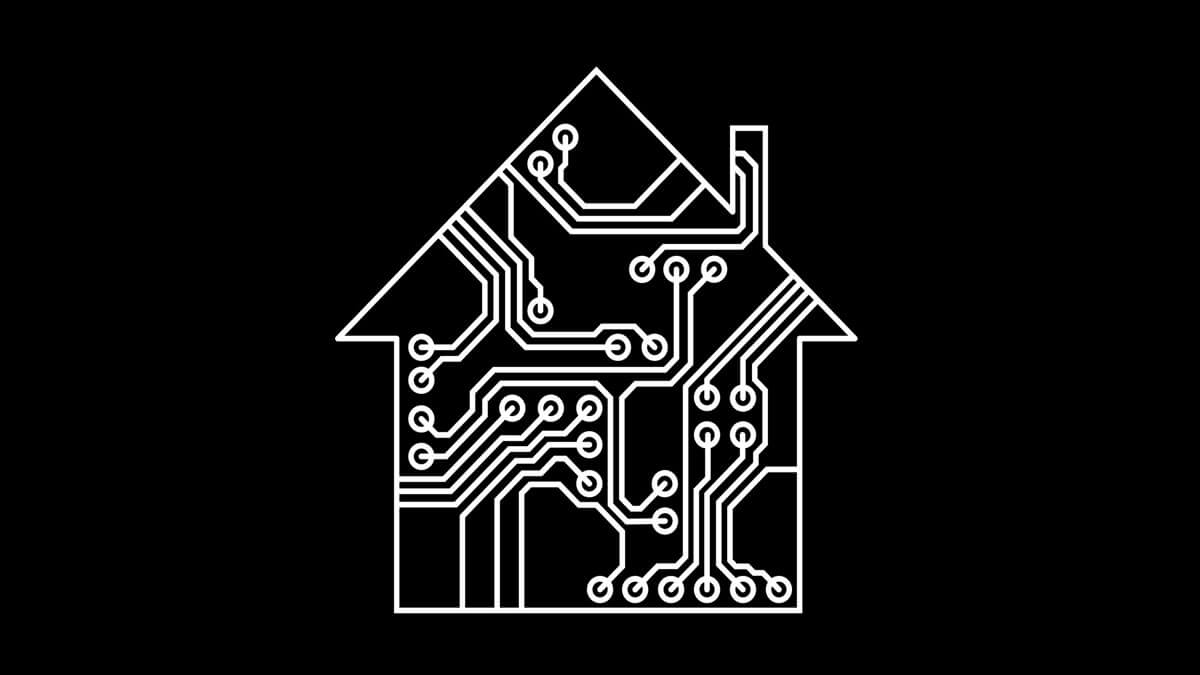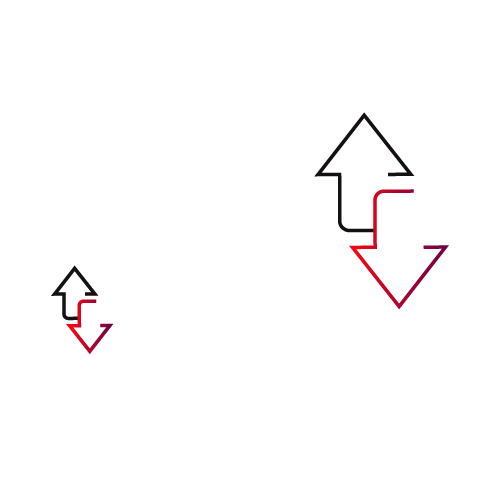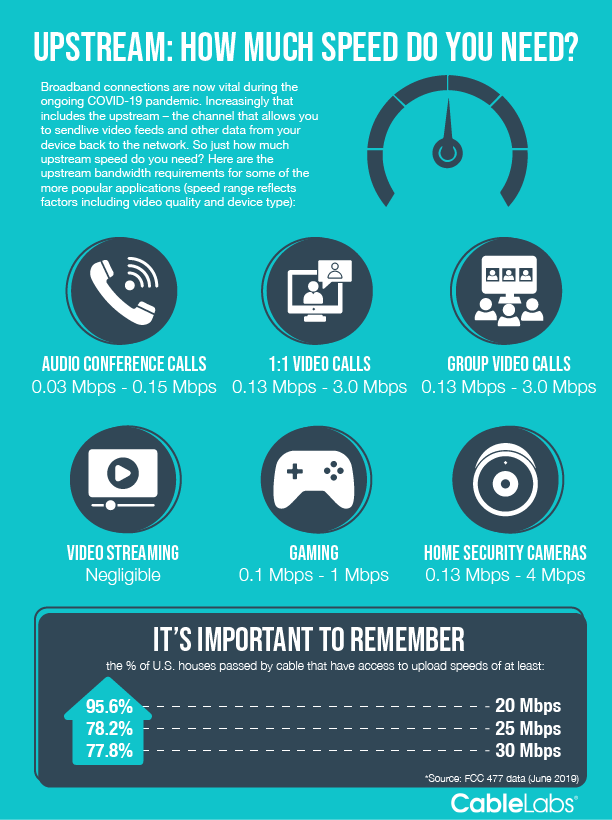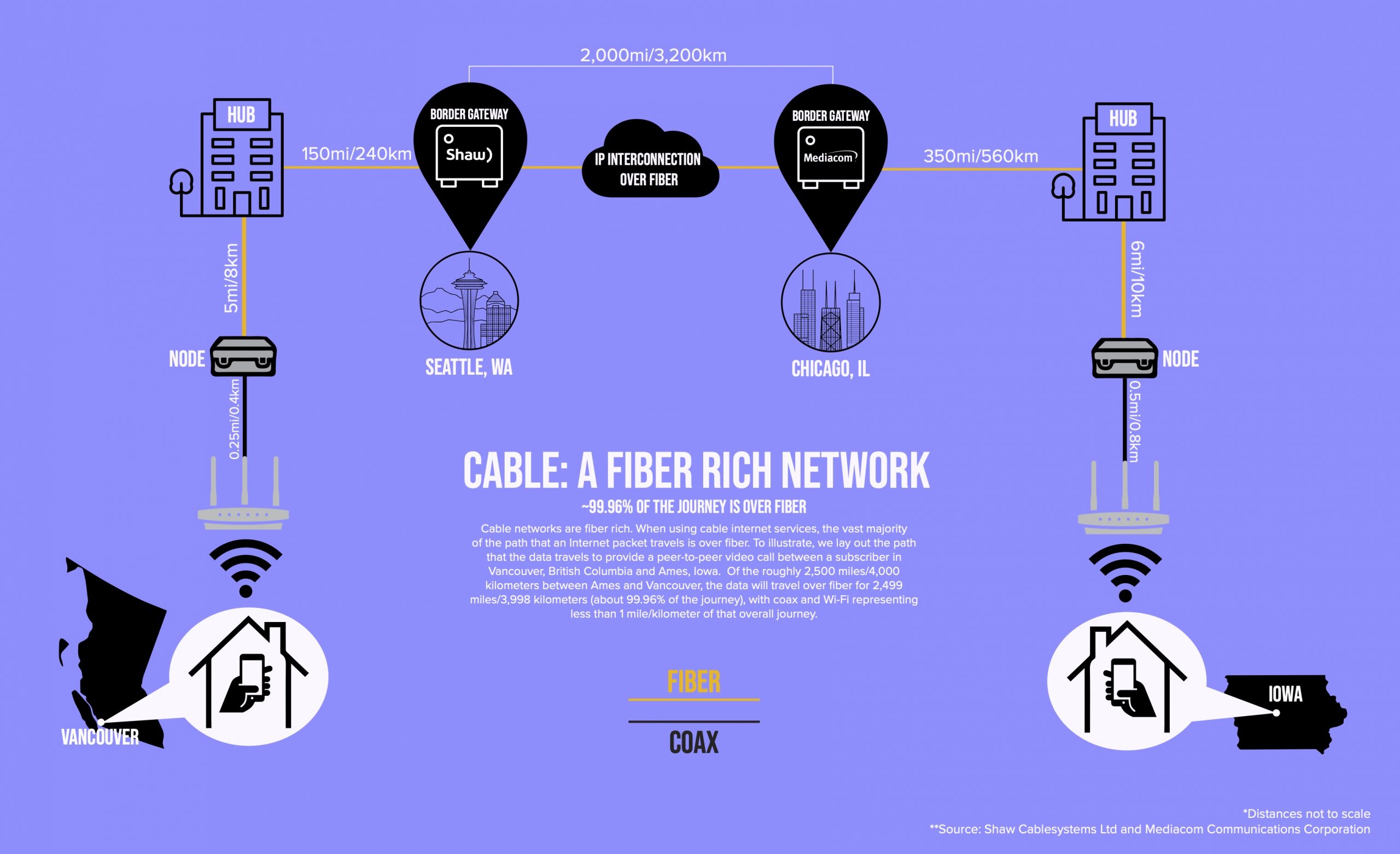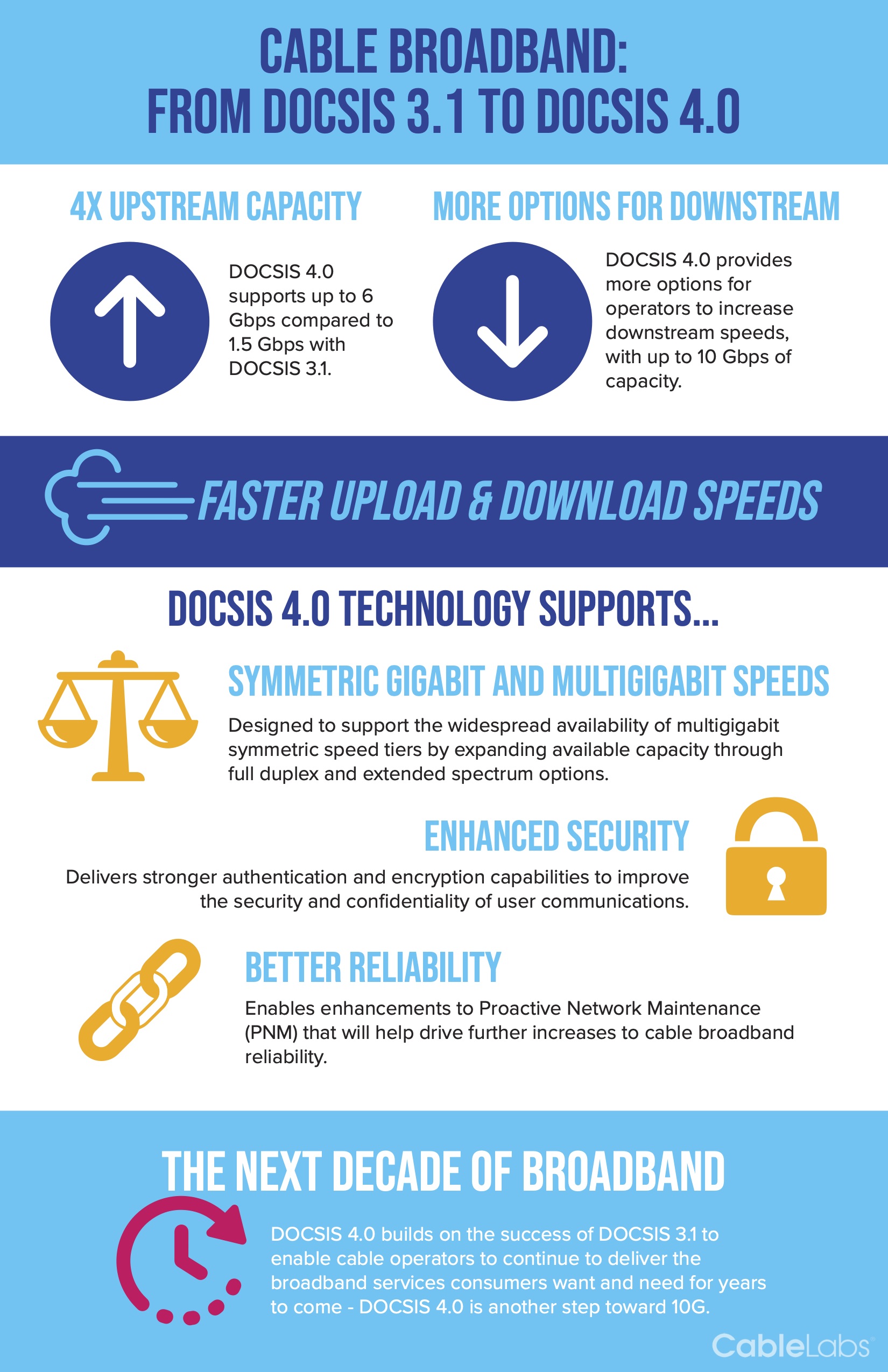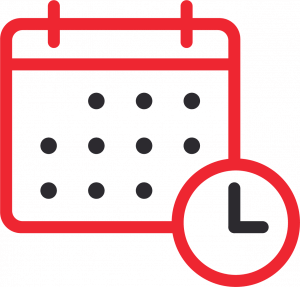Hybrid Fiber-Coaxial (HFC) Networks
Delivering Services That Consumers Want Today
In a world of uncertainty, one thing will never change: Cable broadband will continue to provide the unmatched reliability, flexibility and scalability that our customers need today, tomorrow and in the future.
-

HFC 10G Video
Key Facts About the Cable Industry
-

200 million
The number of households the cable industry serves.
-

Roughly 50%
The number of global cable operators that are also mobile providers.
-

$290 billion
The amount invested in the infrastructure and networks in the United States over the past 20 years.
(Sources can be found here.)
Cable Networks Are...
-

Fast, Secure and Reliable
-

10G Enabled
-

Future-Ready
Now more than ever, network security and reliability are essential to building successful remote working and learning environments. Technologies such as advanced Proactive Network Monitoring (PNM) and CableLabs Micronets—a highly adaptive enterprise-level security solution for home networks—will help make your existing home broadband connection a safe and reliable extension of your school or corporate office. Plus, we’re working with the Open Connectivity Foundation (OCF) and Connected Home over IP Project (CHIP) on increasing the security of various Internet of Things (IoT) devices that often create vulnerabilities in home networks.
The cable industry’s 10G goal is based on tapping into the almost unlimited potential of the existing HFC footprint. We have the infrastructure and technologies to ramp up to multi-gig symmetrical speeds, drive down latency and ensure that our cable networks have more than enough capacity to meet the demand of future innovations. Now it’s all about assembling the correct technology toolset—DOCSIS® 4.0 technology, Low Latency DOCSIS, Profile Management Applications and more—to get to 10G and beyond.
No matter what the post-COVID world will look like, we’ll continue making sure our networks are ready. We’re constantly engaged with next-generation application developers and future-tech organizations, such as the Immersive Digital Experiences Alliance (IDEA), to better understand the speed and latency requirements of light-field displays and other emerging applications. Judging by our current trajectory, such applications might become our way of life sooner than we thought.
FAQs
- In simple terms, how does the cable hybrid fiber-coax (HFC) network transmit the broadband signal to the home?
-
As its name suggests, a typical HFC network infrastructure is composed of two main portions: fiber and coaxial. Once the DOCSIS broadband signal is created in the regional hub—or “headend”—it travels via fiber to an optical node, where it’s transformed into a radio frequency (RF) signal. The RF signal then carries the data over the coaxial cable to a cable modem in the subscriber’s home, where it’s typically distributed to all the laptops, smartphones and other connected devices via Wi-Fi.
- What portion of the HFC network is fiber?
-
The largest portion of the HFC network is composed of fiber that connects a regional hub to optical nodes. Only the last half a mile or so—the distance between an optical node and customers’ homes—is made up of coaxial cable. Since the early days of HFC, cable operators have been consistently investing in fiber-optic technologies, adding tens of thousands of fiber miles to their infrastructure. According to the most recent 2019 S&P Global Report, cable operators Charter and Comcast are among the top 10 providers in terms of fiber miles in the United States.
- What does “fiber deep” mean?
-
“Fiber deep” is a name given to cable operators’ ongoing effort to push the fiber portion of their HFC networks closer to subscribers’ homes. They do this by extending fiber beyond the existing optical node to new optical nodes and then connecting those optical nodes to multiple shorter coaxial networks that serve fewer subscribers. This results in more available bandwidth for each subscriber.
- How do HFC networks handle sudden spikes in data traffic, like the ones we’ve experienced during the COVID-19 pandemic?
-
The first half of 2020 proved that cable is very well prepared to handle surges in data usage. As COVID-19 swept across the world, forcing many of us to work and learn from home, we saw unprecedented spikes in both downstream and upstream traffic, with peak downstream traffic increasing by 20.1 percent and peak upstream traffic increasing by 35 percent from March to April in the United States. Despite similar surges around the world, the vast majority of cable operators in the United States, Canada and Europe were able to comfortably accommodate the needs of their customers. Many even reported excess capacity during peak hours. This illustrates the inherent flexibility and scalability of cable’s HFC networks.
- Why are HFC networks built to allow for more downstream data capacity than upstream?
-
The asymmetrical design of cable’s service tiers is largely driven by customer usage patterns. Simply put, today’s users download more data than they upload. If you look at the top individual applications across network providers worldwide, such as YouTube at 15.94 percent of total traffic and Netflix at 11.42 percent, they’re all downstream-centric. Although we’re seeing a significant increase in the usage of apps that require more upstream capacity, like video conferencing and gaming, this number is still much lower than the overall downstream traffic—roughly 10 percent. In the near future, as we move toward more upstream-intensive applications such as immersive video and interactive light field apps, cable is well prepared to adjust its services to support symmetric multi-gigabit speeds in both directions.
- What strategies and technologies are currently deployed to enhance the capabilities of HFC networks?
-
Cable companies are using a range of technologies and methods to prepare their HFC networks for the multi-gigabit future, such as:
- Fiber deep: Many operators have embraced the “fiber deep” approach of extending the fiber portion of the network closer to customers’ homes, thus increasing the bandwidth capacity available to each customer service group.
- Distributed Access Architecture (DAA): DAA is used to move—or distribute—some or all of the DOCSIS network functionality from the regional hub site to the optical node or other similar remote locations. This allows cable operators to substantially increase the available capacity in each fiber node, as well as customize their network architecture to meet the current and future needs of their customers.
- Coherent Optics: To increase efficiency and capacity, cable companies can use Point-to-Point (P2P) Coherent Optics technology to send vast amounts of data at incredibly high speed—up to 100 Gpbs per second—over the fiber optic portion of their HFC network.
- DOCSIS 3.1 technology: This is the current industry standard for providing high-quality Internet access over HFC networks. It provides significant performance enhancements over the previous version of DOCSIS that include increased spectral efficiency, more sophisticated forward error correction and additional spectrum of up to 1.2 GHz, as well as optional features that could enable capacities of up to 10 Gbps downstream and 2 Gbps upstream.
- How are cable companies preparing to evolve their current HFC networks to meet future demand in terms of speed, bandwidth and latency?
-
The lightning-fast pace of innovation has prompted the cable industry to continuously advance the capacity and performance of its HFC networks. The inherent flexibility of HFC and continued deployment of new cutting-edge networking technologies allows cable to remain well ahead of consumer demand today and in the near future, when next-generation applications like artificial intelligence (AI), video walls and light field technologies become commonplace.
These are just some of the tools available that can significantly improve the performance of cable operators’ networks:
- DOCSIS 4.0 technology provides network technologies that will permit the increased upstream speeds needed to support next-generation immersive experiences and more, enabling symmetric, multigigabit services.
- Active Queue Management (AQM) reduces the amount of time—or latency—required for data to move through the cable broadband network.
- Low Latency DOCSIS® further decreases the average latency to between 1 and 5 milliseconds (roundtrip across the cable network), improving the performance of real-time applications like video calling and gaming.
- What is the cable industry doing to increase the security of HFC networks?
-
As networks grow more complex, network security becomes increasingly important to individuals and businesses all around the world. To stay ahead of ever-evolving cyber threats, CableLabs and the cable industry are deploying a variety of technologies and tactics to keep our networks and data safe. For example, we’ve developed a smarter and more agile network management system called CableLabs® Micronets that organizes all of the connected devices on a single network into multiple dynamically managed subnetworks that can effectively isolate outside threats. Other tools include Wi-Fi Easy Connect, a mechanism that imprints each connected device with secure and unique credentials, allowing systems like Micronets to identify and manage each device as necessary. CableLabs and other cable industry representatives are also actively engaged with manufacturers and various industry organizations, such as OCF, to increase the security and interoperability of IoT devices.
- What technologies are used to enhance the reliability of cable HFC networks?
-
Consumers everywhere are relying on cable networks to deliver interruption-free services. Whether people are working from home, talking to their doctor or playing a game online, any outage—no matter how short—is deemed unacceptable. Although a 100 percent failure-proof technology doesn’t exist, we can significantly reduce the chances of a problem occurring by using tools such as Proactive Network Management (PNM) and Profile Management Application (PMA). PNM uses a combination of network monitoring and maintenance techniques to collect and then analyze data for abnormalities, which can be addressed before they can potentially lead to failure. PMA allows subcarriers to use various modulation orders, allowing the network to be operated with lower signal-to-noise ratio (SNR) margins and increasing the overall capacity of the network. This is especially useful for optimizing performance in response to changes in the physical characteristics of the network and, potentially, to changes in subscriber usage patterns, such as those triggered by COVID-19.
- How are cable companies and CableLabs preparing to support next-generation technologies, such as interactive light field applications?
-
Cable companies understand that consumer needs and expectations will continue to evolve as the next wave of multi-gigabit innovations hits the consumer market. That’s why the cable industry is constantly collaborating with the broader ecosystem of technologists to gain understanding of emerging applications and their network performance requirements. For example, we’re working with the Immersive Digital Experiences Alliance (IDEA)—an industry group seeking to accelerate the commercialization and availability of light field displays that will require staggering amounts of real-time, two-way data. This will help ensure that the cable industry continues to invest in building a more powerful broadband platform capable of supporting the technologies of the future.
